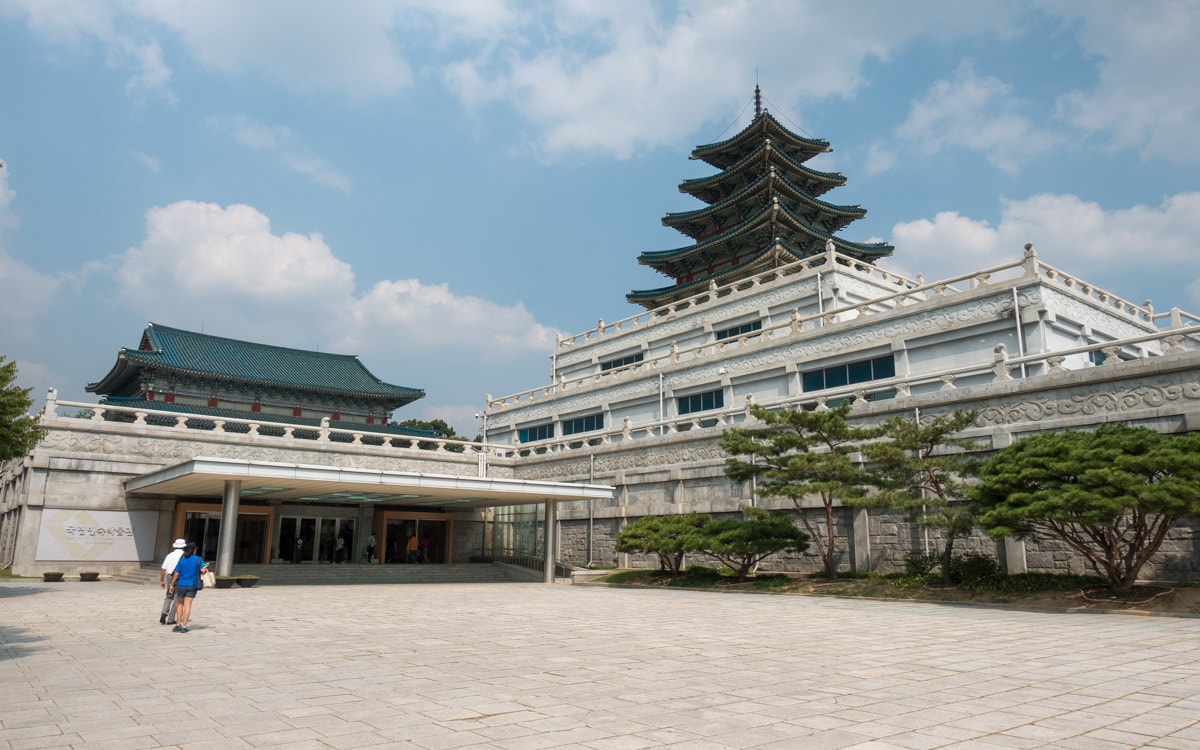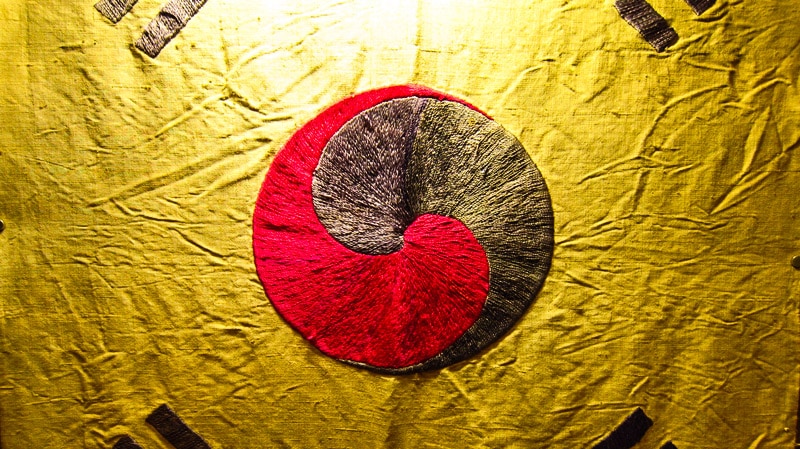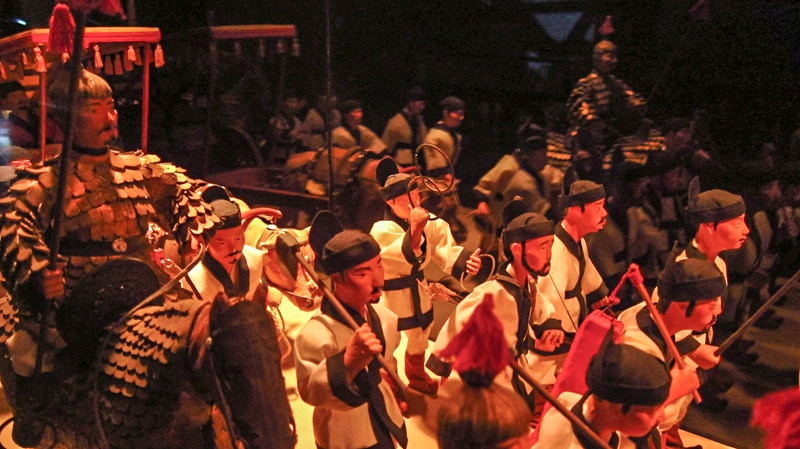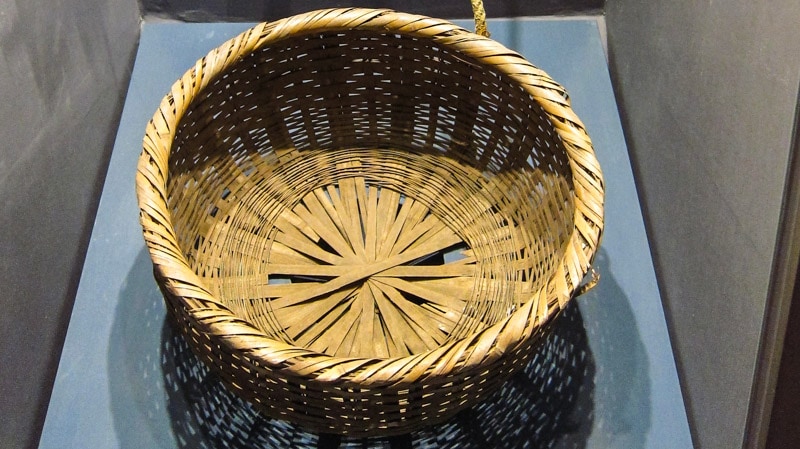
Admission is free with Gyeongbokgung Palace ticket.
There is a free museum tour at 10:30 and 14:30 in front of Exhibition Hall 1.
Closed on Tuesdays.
The National Folk Museum of Korea is a museum on the grounds of Gyeongbokgung Palace, not to be confused with the nearby National Palace Museum of Korea which is also found on the palace grounds.
The museum dates back to April 25, 1946. In 1975, the museum moved to the grounds of Gyeongbokgung Palace.
The museum moved to its current location on February 17, 1993. Today, it features over 4,000 artifacts on display which immerse visitors in the rich history.
Exhibits at this museum show the visitor how everyday citizens lived both past and present including the lifestyles and traditions of everyday Korean people during a time when the country was mainly agricultural.


The museum features three permanent exhibits along with two special exhibits, an open air exhibition and a children’s museum.
Exhibition Hall I : History of Korean People
This hall displays both cultural and historical exhibits from the daily lives of the people. Visitors can learn about how technology and the spread of knowledge was used to evolve from the Paleolithic Age into the advanced country that it is today.
Exhibition Hall II : The Korean Way of Life
Visitors here can learn about the daily agriculture lives including how farmers prepared for each season and how they learned to use farming and harvesting tools, along with irrigation systems, to produce plentiful harvests that helped feed the country.
Exhibition Hall III : Life Cycle of Koreans
This hall traces the life of an upper class citizens from birth to death, including birthdays, education, marriage, families, and careers.


Table of Contents
Open-Air Exhibition
On display in the open-Air exhibition is a Korean totem pole that was said to protect villagers, basalt statues from Jeju Island, a grinding mill, stone figures of civil and military officials, and a memorial pavilion.
Traditional Village : A Street to the Past

This part of the museum takes the visitor back in time to the late 19th century when a new modern culture was arriving in Korea. This replica of a street in a traditional village recreates what life was like at a time when electricity was first made available. Present here is a streetcar and hanok style buildings and stores for dry goods, herbs and medicine, bamboo goods, and a hat shop.
There is also a replica of a print shop that was used by newspaper and publishing companies from the 1930s to 1970s.
Children’s Museum
This part of the museum teaches both parents and children about the life, values, and wisdom of a traditional tale known as simcheong.
National Folk Museum Of Korea Hours
March-April : 9:00-18:00
May-August (Weekdays) : 9:00-18:00
May-August (Weekends) : 9:00-19:00
September-October : 9:00-18:00
November-February : 9:00-17:00
Last admission 1 hour before closing time.
Free guided tours in English are available at 10:30 and 14:30. Tours start in front of Exhibition Hall 1.
Closed on Tuesdays
Admission
Free with Gyeongbokgung Palace ticket.
How to get to National Folk Museum Of Korea
The National Folk Museum of Korea is located at the northeast corner of Gyeongbokgung Palace.
Option 1
Take Subway Line 3 to Gyeongbokgung Station (Exit 5).
Option 2
Take Subway Line 5 to Gwanghwamun Station (Exit 2).
Map
Additional Resources
Book Recommendation: Fodor’s Seoul
While The Seoul Guide provides plenty of information about traveling to Seoul, sometimes it helps to bring a book with you on your journey. Want to visit Gwangjang Market, hike Bukhansan National Park, visit an ancient palace, or sing karaoke all night long? The book I always recommend is Fodor's Seoul, which provides expert recommendations including sights to see, restaurant reviews, maps, and essential trip-planning information for everything related to Seoul.
Learn more about Fodor's Seoul
Rakuten
Save money while exploring Seoul with Rakuten's cashback program. By booking hotels through Rakuten, visitors can earn cashback rewards and enjoy significant savings. Exclusive partnerships and deals make stays in Seoul more affordable, freeing up funds for attractions, dining, and other experiences. I use Rakuten for cashback on all of my hotel stays in Seoul.
If you sign up using the link below, you will get $30 cashback after your first purchase over $30.
Klook
Klook is a reliable online platform offering discounted tickets and reservations for attractions and services in Seoul. It covers theme parks, museums, transportation, WiFi, tours, and more. Travelers can save time and money by booking through Klook's user-friendly interface, with secure transactions and helpful customer support.
If you sign up using the link below, you will get $5 off your first order.
Learn more about KlookLast Updated on Oct 21, 2023